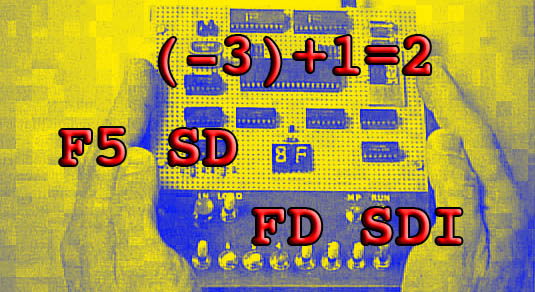
After a long break from Tom Pittman’s online book A Short Course in Programming, I’m digging in again to attempt to understand the second half of chapter 5. I’m still running the same suggested program which is 5.1 ALU OPS. The bytecode for subtraction is F5. There is nothing profound about this command other than you enter the data backwards. For instance, it’s not:
3-1=2
It’s more like:
(-3)+1=2
If you screw up and go the other way with it, you won’t end up with 2 for an answer, you’ll loop register and come up with FE. Makes sense to me since 1-3=FE on the 1802 which cannot directly represent signed numbers natively. So the thing to take away from this is that the “negative” number is the first operand that you will input after the instruction. The second number will always be interpreted as a positive number.
The next subtraction instruction is FD which tells the 1802 to subtract the next byte in memory after the instruction from whatever is in the memory location 0060. The third byte of the default, unmodified program is ignored and replaces with C4 since that lives at location 2A in memory. If I put in FD, 01, 55, the computer does this:
(-01)+C4=C3
This part of the chapter is getting sticky for me again. Hopefully I’ll be ready to muddle through it some more shortly.
If you like the content on this site, please support it by using this link to order from Amazon. You know you were going to go there and buy stuff anyhow so why not help me pay the hosting bill.

